

| Ten common Nottinghamshire moths by month |
| January |
| January is a good month for anyone
new to moth trapping, although catches are usually small.
The month also sees a relatively small selection of moths on the wing, made up of several species lingering (depending on the severity of the Winter) from late the previous year and some traditionally early fliers. The lack of species, does mean that their identification is often easier, which helps the beginner. |
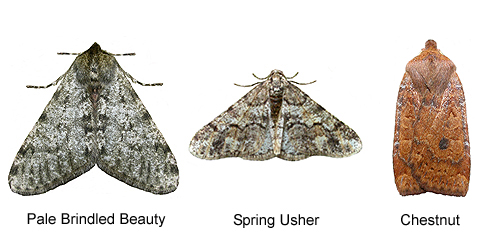 |
|
| .... | ||
| As a rule, it is often
not worth considering running the moth trap from urban or
suburban sites during the Winter months (unless your
garden is within sight of wooded habitat) and it is
rarely worth trapping with a temperature below 6°C. Pot up any unidentified moths for identification later. Photographing the species you don't recognise (or cannot identify) the following day, should become standard practice and helps enormously with micromoth identification. Photograph the larger moths (macros) from above and smaller moths (micros) from the side and in natural light. This will enable a better chance of correct identification, if you send your photographs to others for identification help. Below are the ten species most likely to be seen in Nottinghamshire during the month. |
||
| 17.011 .... B&F 0461 .... Ypsolopha ustella (Clerck, 1759) |
||
| Status .....Seems to be an uncommon moth and most Nottinghamshire records are from Sherwood Forest. Likely to be more widespread than records currently suggest. | ||
| .... | ||
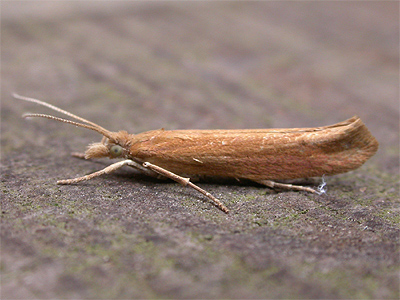 |
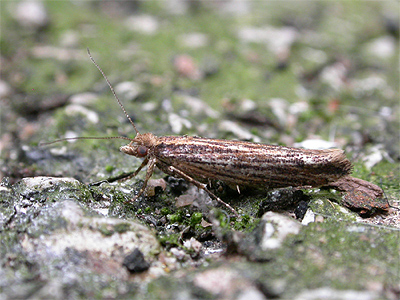 |
|
| 49.044 .... B&F 1025 .... Tortricodes alternella ([Denis & Schiffermüller],
1775) |
||
| Status .....Is probably found at many woodland sites, but flies very early in the year and so many be missed by many moth trappers. At Sherwood Forest and Lound Wood at Eakring, this moth can be abundant at MV light on mild February evenings. | ||
| ...... | ||
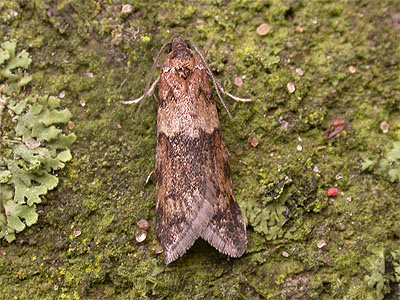 |
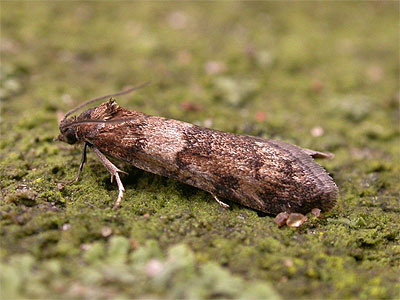 |
|
| 49.083 .... B&F 1044 .... Acleris ferrugana ([Denis & Schiffermüller],
1775) |
||
| Status .....Fairly common at all the Sherwood Forest sites we have visited, to where this moth seems largely confined. Note that Acleris ferrugana is visually identical to Acleris notana. | ||
| .... | ||
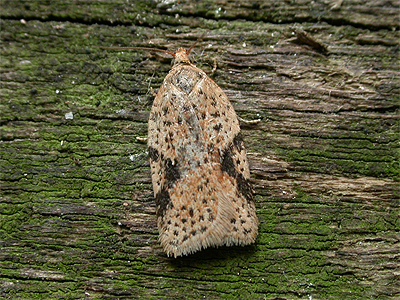 |
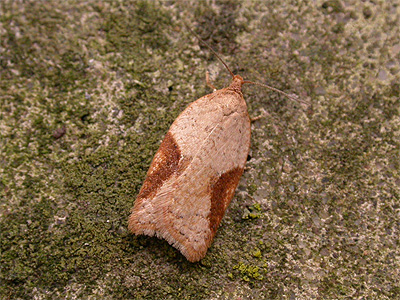 |
|
| 66.001 .... B&F 1631 .... December Moth Poecilocampa populi
(Linnaeus, 1758) |
||
| Status .....Probably much more common than the latest distribution map would suggest. December Moth is certainly very common to MV light in the Sherwood Forest and Idle Valley areas and should turn up in suburban areas, as we have records from the middle of Market Warsop. Has also been recorded from Attenborough NR. | ||
| ..... | ||
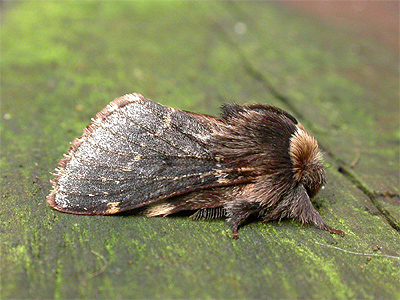 |
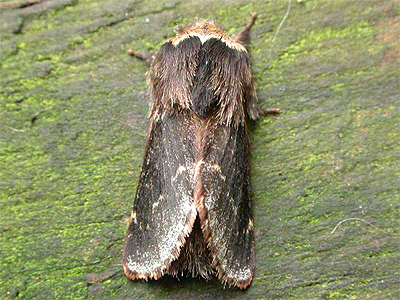 |
|
| 70.106 .... B&F 1799 .... Winter Moth Operophtera brunata (Linnaeus,
1758) |
||
| Status .....Probably common throughout Nottinghamshire, but evidence would suggest that this moth is uncommon along the Trent Valley. This could also be down to the lack of recording moths during the late Autumn and Winter months. The female is wingless. | ||
| ... | ||
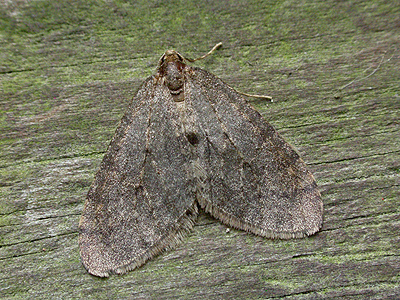 |
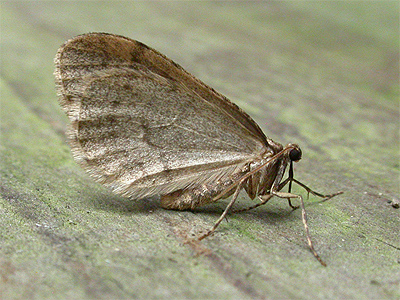 |
|
| 70.247 .... B&F 1926 .... Pale Brindled Beauty Apocheima pilosaria ([Denis
& Schiffermüller], 1775) |
||
| Status .....Probably quite widespread, but maybe under recorded due to the early flight period. Most records we have available to us are from the north of Nottinghamshire. | ||
| ... | ||
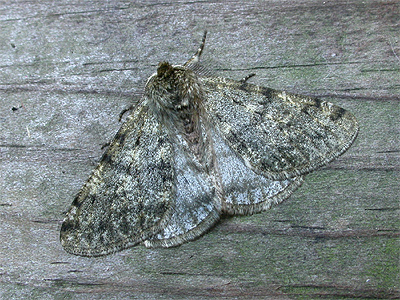 |
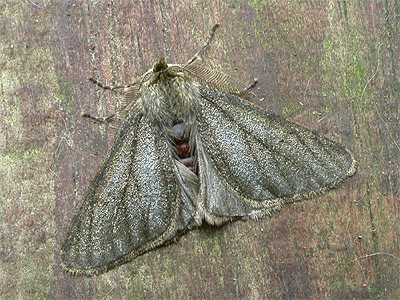 |
|
| 70.253 .... B&F 1932 .... Spring Usher Agriopis leucophaearia ([Denis & Schiffermüller], 1775) |
||
| Status .....Common at Sherwood Forest NNR, where it can appear at MV light in good numbers. Spring Usher seems surprisingly scarce in Nottinghamshire, but this may be due to flying in January and February of most years. The female is wingless. | ||
| .... | ||
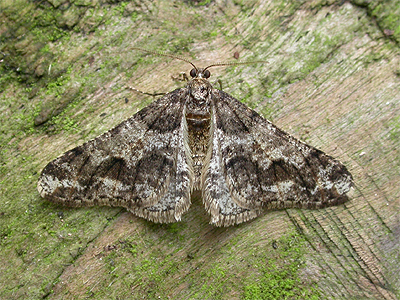 |
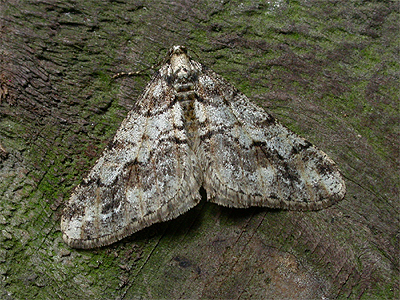 |
|
| 70.256 .... B&F 1935 .... Mottled Umber Erannis defoliaria (Clerck,
1759) |
||
| Status .....Common at many woodland sites in a line running south-west to north-east through the county. Strongly attracted to MV lights and security lights. The females are wingless and can be found during the day on the trunks of trees. On the wing from November onwards. | ||
| ... | ||
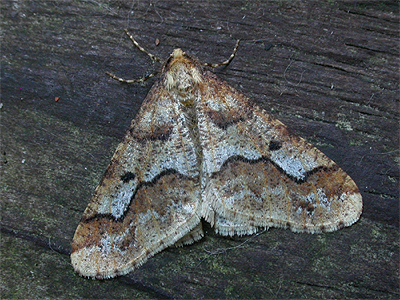 |
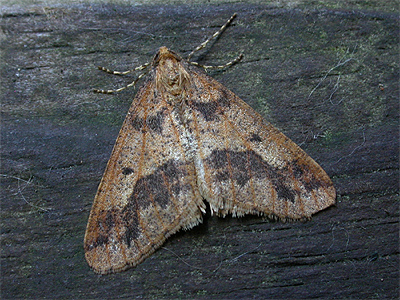 |
|
| 70.282 .... B&F 1960 .... Early Moth Theria primaria (Haworth, 1809) |
||
| Status .....Generally common, but with very few people running moth traps during this moth's flight period, it is difficult to get a clear picture of its distribution. This moth is probably the species most frequently seen in car headlights, flying along roads during the early months of the year. At Eakring between 2003 and 2006 it was common, and it was clear that there were concentrations of adults along the roadsides. | ||
| ... | ||
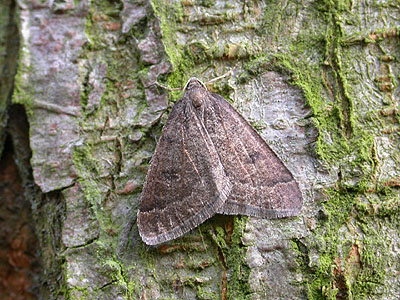 |
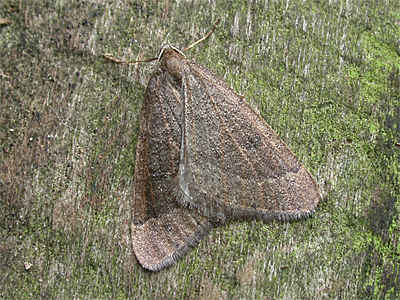 |
|
| 73.194 .... B&F 2258 .... Chestnut Conistra vaccinii (Linnaeus, 1761) |
||
| Status .....Common at all sites where it occurs, with a similar Nottinghamshire range to Dark Chestnut. Very common at sites within the Sherwood Forest NNR, but likely to be found in most Nottinghamshire woodlands. | ||
| .... | ||
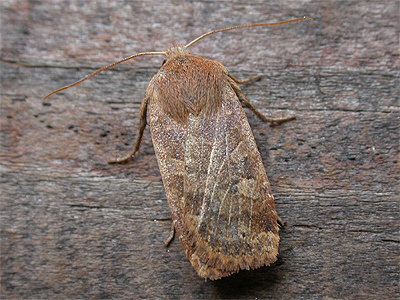 |
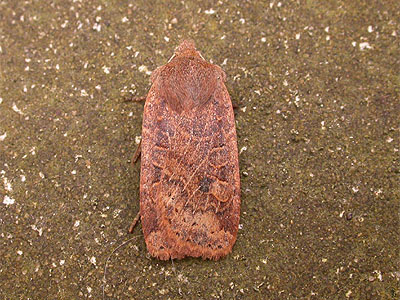 |
|
| Can't find your moth? Some other moths often recorded at MV light during January |
| .... |
| Its largely impossible to restrict the most likely moths which could be recorded during January to ten species. The following moths are also likely to occur during the month, although some may be more habitat specific and less likely to be recorded from suburban gardens. |
| .... |
| Common moths often recorded during the day |
| ..... |
| The following over-wintering moths can be looked for in out-buildings and shelters, or under loose bark during December. Look out for over-wintering Herald and Tissue in caves and tunnels etc. |
| ..... |